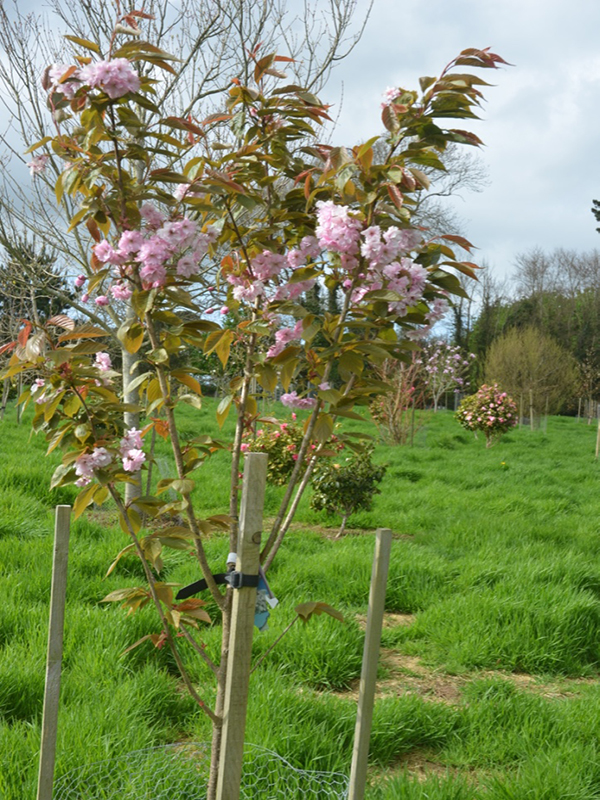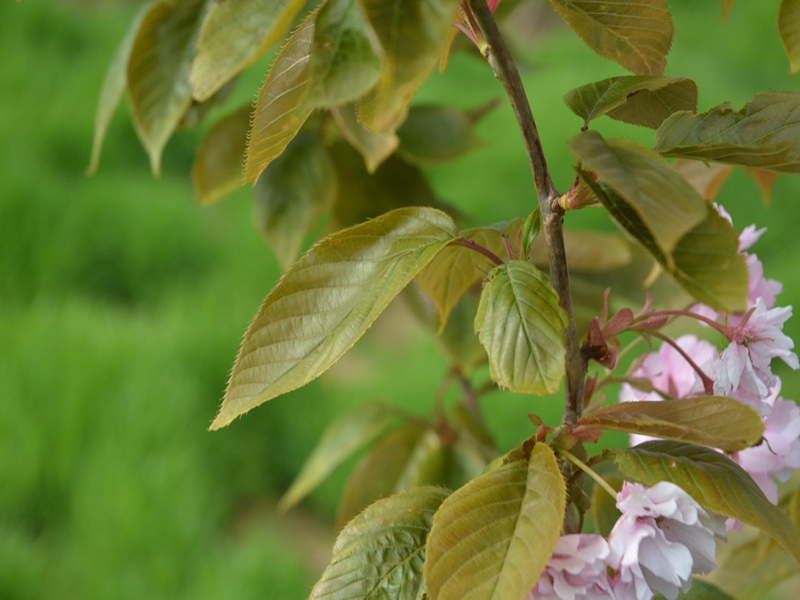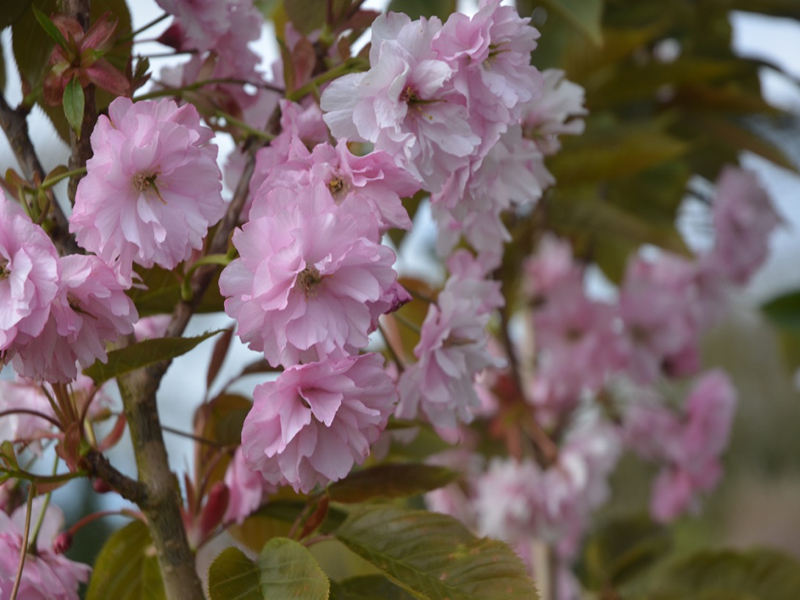
Woody > Prunus > Prunus 'Hokusai'
Prunus
'Hokusai'
Hokusai Japanese Flowering Cherry
Origin: Hokusai was selected by English enthusiast Collingwood Ingram in the 1920s, and named after a 19th century artist. It is likely to be a form of one of the earliest Japanese flowering cherries introduced to Europe by von Siebold in the 1860s, known at the time as Prunus cerasus rosea-pleno.
| Family |
| Rosaceae |
| Genus |
| Prunus |
| Cultivar |
| 'Hokusai' |
| Category |
| Woody |
| Type |
| Tree (deciduous), Shrub (deciduous) |
| USDA Hardiness Zone |
| 5 - 9 |
| Canadian Hardiness Zone |
| 6 - 9b |
| RHS Hardiness Zone |
| H4 |
| Temperature (°C) |
| (-20.6) - (-1.1) |
| Temperature (°F) |
| (-4) - (30) |
| Height |
| Up to 6 m |
| Spread |
| 9 m |
Photographs
Description and Growing Information
Flowering Period
| Landscape |
| A specimen plant or in small groupings. |
| Cultivation |
| Grow best in moist, fertile, well-drained loams in full sun to part shade. Best flowering in full sun. |
| Shape |
| Upright-spreading. |
| Pests |
| Potential diseases include leaf spot, die back, leaf curl, powdery mildew, root rot and fireblight. Potential insects include spider mites, aphids, scale, borers, leafhoppers, caterpillars, tent caterpillars and Japanese beetles. |
| Bark/Stem Description |
| Very smooth, shinny bark with very pronounced lenticels. |
| Leaf Description |
| Dark green, ovate lance-shaped and tapered to 10 cm long, and turning yellow in the autumn. |
| Flower Description |
| Large, pink - light, semi-double flower, 10-20 petals, non-fragrant, and borne as leaves emerge. |
| Fruit Description |
| An ovoid cherry-like fruit in late summer. |
| Texture Description |
| Medium-textured in all seasons. |
| Notable Specimens |
| Caerhays Castle, Goran, Cornwall, United Kingdom. |
| Propagation |
| By stem cuttings. |


